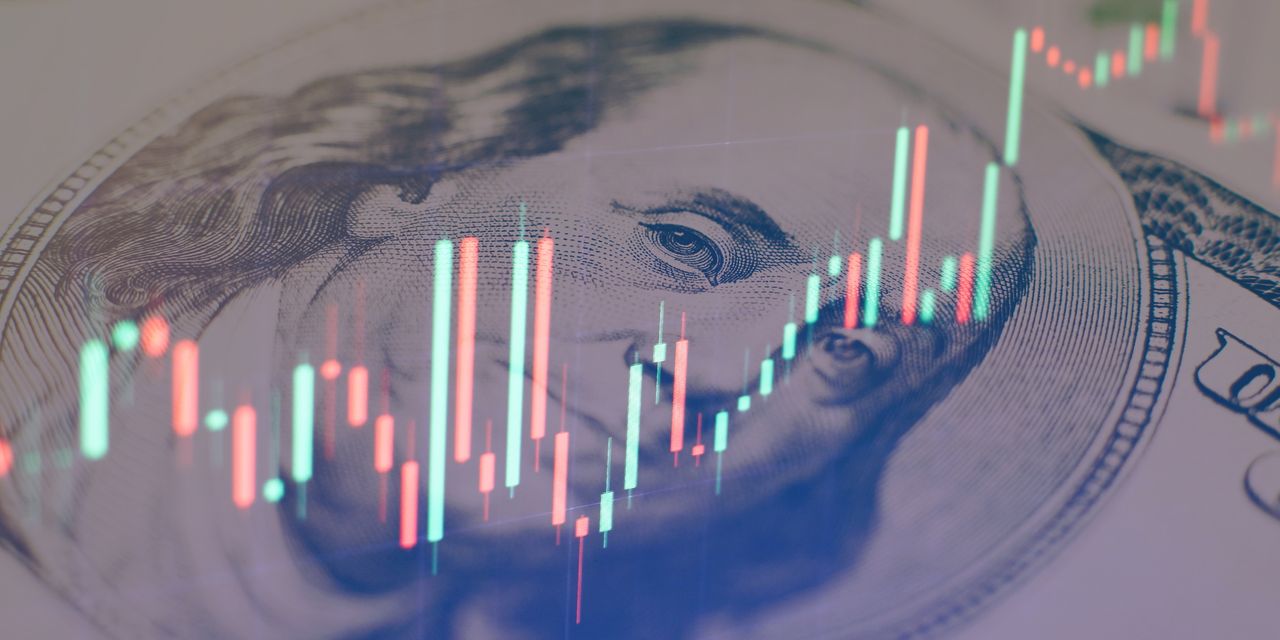Stockpickers can pop the Champagne—at last.
Small- and large-cap stock pickers had a strong first half of 2023, challenging the conventional wisdom that index-tracking funds do better. Only large-cap blend funds struggled to beat their benchmarks, mainly because a handful of megacaps dominated, leaving more diversified funds at a disadvantage.
According to data from Morningstar Direct through June 20, actively managed stock mutual funds and exchange-traded funds beat their passive peers across categories, except in the large blend category, where passive trounced active by nearly 1.50 percentage points.
The next six months may prove favorable for active managers if dispersion—the spread of returns in an index—or market breadth—which reflects how many stocks participate in a rally—increase, allowing other sectors and stocks to catch up to the megacaps.
While active managers with value or growth tilts or small-cap portfolios had the stronger first half of the year, “they have a long way to go to considering themselves victors over passive,” said Bryan Armour, director of passive strategies research for North America at Morningstar Research Services. “Every year there’s a story on how this is a stockpicker’s year, and it rarely ends up being the case.”
So far this year, a handful of growth stocks have been driving returns. The
S&P 500
has surged in 2023, up more than 13%, but the gains have been mostly due to tech stocks, including
Nvidia
(ticker: NVDA) and
Tesla
(TSLA), that have masked what has been a pretty mediocre year for the stock market. Funds that loaded up this year’s winners have seen outsize returns.
“It will be interesting to see if what’s allowed active managers to outperform is having a more concentrated portfolio in some of these riskier names that have just paid off year to date,” Armour said.
The U.S. large-cap blend category—portfolios where neither growth nor value dominate—is where the vast majority of assets are located, Armour said. In addition to style-neutral active funds, it includes the S&P 500 and Russell 1000 and 3000 index funds, and others such as the Vanguard Total Stock Market Index Fund (VTI).
One reason passive funds outperformed in that category is their low cost. “Fees are number one, and then just the fact that this is where the majority of the U.S. market would fall makes it very easy for passive funds to outperform active ones by virtue of the fact that these are the most covered, the most known, quantities in the market,” said Armour. “So it’s easy for an index to take advantage of how much information is embedded in the price of these stocks. And so it’s really hard for active managers to find an edge in large blend funds.”
Active managers’ encouraging performance so far this year builds on 2022, which was the best year for active U.S. equity fund managers since 2009.
The S&P Indices vs. Active report—better known as SPIVA—released in March, found that a slim majority, or 51%, of funds in the closely watched U.S. large-cap stocks category underperformed the benchmark in 2022. For all domestic U.S. equity funds, it was a coin toss in 2022 at 50%.
The long-term performance data show active management has a lot of catching up to do. Over the past 10 years, less than 7% of U.S. active equity funds have beaten the market, according to the SPIVA U.S. scorecard.
Anu Ganti, senior director of index investment strategy at S&P Dow Jones Indices, said while S&P doesn’t yet have midyear performance data, one potential tailwind for active managers this year was high dispersion.
“If you’re a stockpicker, and if you have skill, and if you make the call right, there’s greater potential to add value from stock selection when dispersion is higher,” she said. “What we saw in May is that the S&P 500 stock level dispersion rose to its highest level since March 2020.”
The level has since declined toward its long-term average. If the downward move continues, the tailwind could become a headwind for stockpickers for the rest of the year.
That doesn’t mean investors should shy away from active strategies.
“Active and passive management are critical and play different roles in a broader portfolio,” said Apurva Schwartz, a member of the Active Managers Council’s research task force and a portfolio specialist at Harding Loevner. “Active management allows investors to navigate complexity, customize portfolios, manage risks, capitalize on specific skills, or try to profit from market inefficiencies. Passive management can help reduce costs and that’s important, especially in efficient market segments.”
Write to Lauren Foster at [email protected]
Read the full article here


